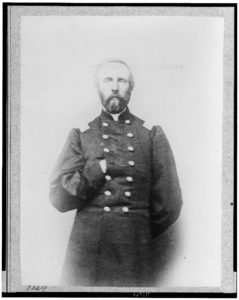
Soldiers Could Never Escape the Suffering Imposed by the Civil War, courtesy Library of Congress
People today understand the after-effects of war on veterans better than previous generations did (though that doesn’t diminish its trauma). Soldiers in previous eras were much more on their own, since medical personnel didn’t recognize the emotional damage and scarring they often suffered. Civil War soldiers in particular faced a changed war environment that greatly contributed to their later trauma.
These young men suffered death and injury on the grandest scale experienced in American history. They endured horrific wounds inflicted by new weapons and then went on to suffer just as intently afterward from assembly-line-style amputations. Many soldiers saw the ground seem to crawl and shift with wounded, struggling bodies after a great battle, or heard cries for help they could never forget. They often carried this trauma back to the battlefield and then home.

Civil War Soldier Angelo Crapsey, 1861, Who Committed Suicide in 1864 After a Period of Mental Illness, courtesy Kutztown University of Pennsylvania
Physicians did recognize that some symptoms occurred specifically to soldiers they saw: heart palpitations, sweating, and/or rapid breathing, and other symptoms of panic attacks. These manifestations were identified by Jacob Mendes Da Costa and called “Da Costa’s Syndrome” or more commonly, “soldier’s heart” or “irritable heart.” Some physicians sympathized with men suffering from it, while others thought they were merely shirking their duty. At home, men who suffered from the after-effects of war trauma were similarly misunderstood.
The Government Hospital for the Insane (later known as St. Elizabeths) had been built specifically for soldiers, sailors, and the indigent of Washington, DC, but many other asylums also saw an influx of veterans who could not cope with their post-war trauma. Most did not get much help beyond the security of three meals a day and a bed to sleep in, along with occupational therapy–usually in the form of work–to help them pass their days.

Brevet Brigadier General Newell Gleason Was Admitted to the Indiana State Hospital for the Insane in 1874 and Committed Suicide in 1886 Some Time After His Release, courtesy Library of Congress
These veterans were often traumatized one last time by family members and a society ashamed by the idea of mental illness and the “weakness” of the man suffering from it.